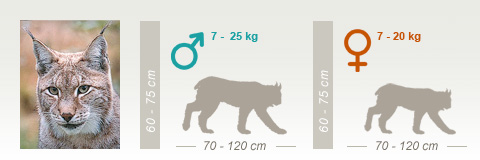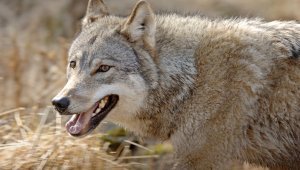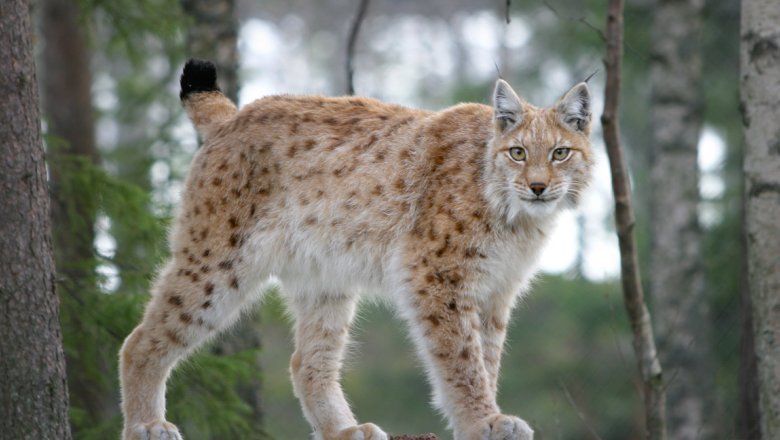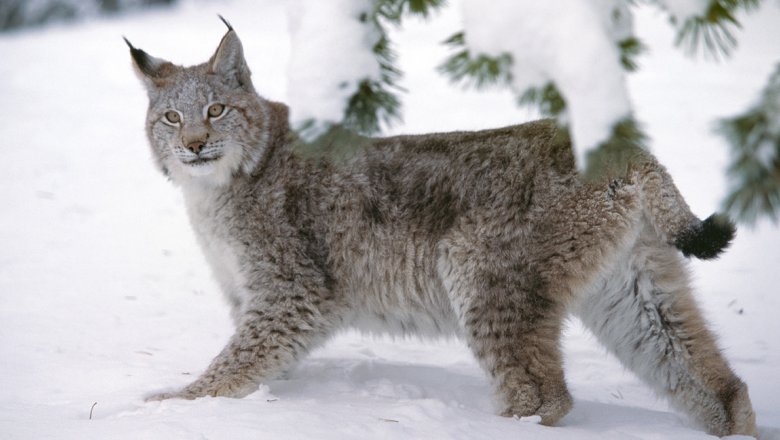The lynx is Finland's only wild feline

- Body length: 70–140 cm (tail 15–25 cm)
- Weight: usually between 8–25 kg, the male is larger than the female
In summer, the coat of the lynx has a reddish grey tone, and in winter it is greyish white. The coat has brown or black spots and streaks, but some individuals have almost no spots. The stomach is a paler colour. The lynx has black tufts in its ears. The earlobes have pale blotches at the back, which are easy to see in the dusk. The eyes of the lynx are large in proportion to its skull and yellow in colour, and its pupils are round.
In body shape the lynx is long and slender. Its back is relatively long, the legs are longer in proportion to its body than in domestic cats, and the back legs are also longer than the front ones. Like all cats, the lynx can detract its claws inside the paw. The lynx uses its claws for hunting, climbing trees or when walking on a slippery surface. While its claw marks cannot usually be seen in its tracks, they may be visible when the lynx has been walking in soft snow or on a slope, spreading its toes to get a better grip. The short tail of the lynx has a black tip.
Anatomy
The most important senses of the lynx are its sight and hearing, which are extremely keen. While the lynx has a good sense of smell, it is not as important for hunting as sight or hearing.
Evolution has honed the lynx into a consummate hunter. The lynx is the purest predator of all Finnish large carnivores, and compared to the other species in this group, its skull is structurally specialised to eating meat.
The canines are particularly long, sharp and flattened like knife blades. The carnassial teeth are strong and well developed, and their shape is ideal for cutting meat. The molars, which are usually used for grinding and mincing coarser foods, are hardly there. The structure of its teeth and skull indicates that the lynx, unlike the wolf, does not have the bite force needed to crush bones or eat other similar coarse foods.
Lynx jaws are relatively short and powerful and the prominent zygomatic arch offers a good attachment point for the animal's large jaw muscles. While the skull of the lynx does not have bone ridges, its high shape provides a wide attachment surface for powerful neck muscles. The neck and jaw muscles give the lynx the bite force and gripping power it needs for hunting, in addition to serving as shock absorbers which distribute the impacts the animal incurs when it hunts to the entire body.



